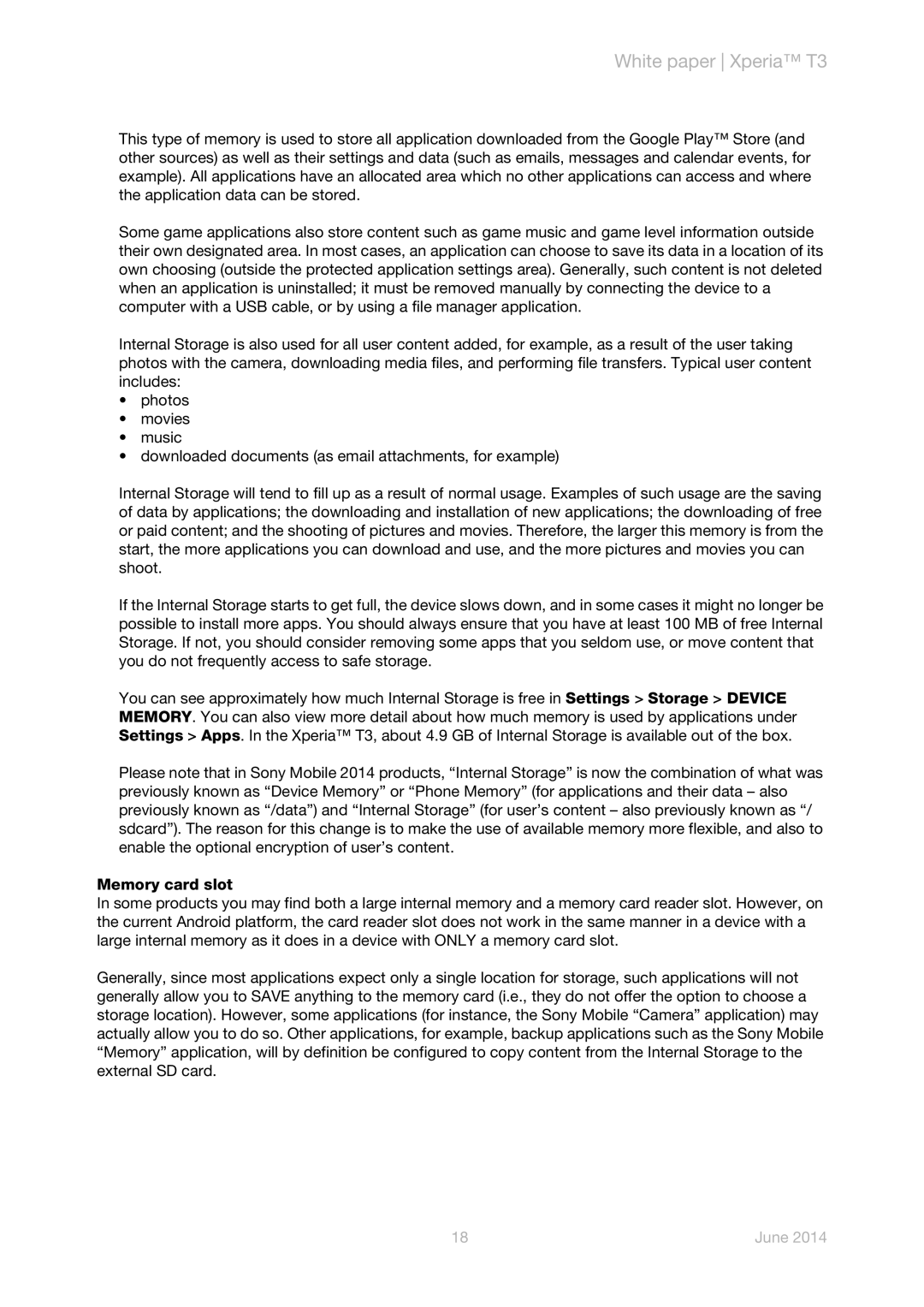D5102/D5103/D5106 specifications
The Sony D5102, D5103, and D5106 are part of Sony's esteemed lineup of mobile devices, tailored for users seeking a blend of modern technology, stylish design, and practicality. These models, offering a range of features, have made their mark in the competitive mobile market.First and foremost, the display is a strong selling point for the D510 series. These devices feature a vibrant TFT touchscreen, typically around 4.5 inches in size, delivering crisp visuals and responsive touch interactions. The resolution is optimized for clarity, ensuring text, images, and videos appear sharp and vibrant, making content consumption a pleasure.
In terms of performance, the D5102, D5103, and D5106 are equipped with efficient processors designed for multitasking and smooth operation. With enough RAM to support seamless transitions between applications, these models handle daily tasks effortlessly, whether it’s browsing, gaming, or streaming content. The processing power also enhances the user experience by allowing for quicker load times and improved overall performance.
One of the standout features of these devices is their camera capabilities. With a primary camera that often exceeds 13 MP, users can capture high-quality images with ease. The cameras are integrated with various modes, including HDR and panorama, which help enhance photos taken in challenging lighting conditions. The front-facing camera, suited for video calls and selfies, usually includes features that support beautification and other enhancements.
Battery life is another critical characteristic of the D510 series. Equipped with a reliable battery, these devices offer all-day usage, making them ideal for busy individuals who require their phone to last through extensive use. Fast charging technology ensures that users spend less time tethered to a charger.
The software experience on the D5102, D5103, and D5106 is enriched by Sony's customized interface built on Android. This combination provides a user-friendly interface coupled with access to a vast ecosystem of applications through the Google Play Store.
Additionally, the D510 series includes various connectivity options, including 4G LTE capabilities, Wi-Fi, Bluetooth, and GPS. This ensures that users stay connected, whether at home, at work, or on the go.
Overall, the Sony D5102, D5103, and D5106 represent a harmonious blend of advanced technology, intuitive design, and essential functionalities. These devices cater to a diverse range of users, from casual smartphone enthusiasts to tech-savvy individuals, making them an appealing choice in the current smartphone landscape.
